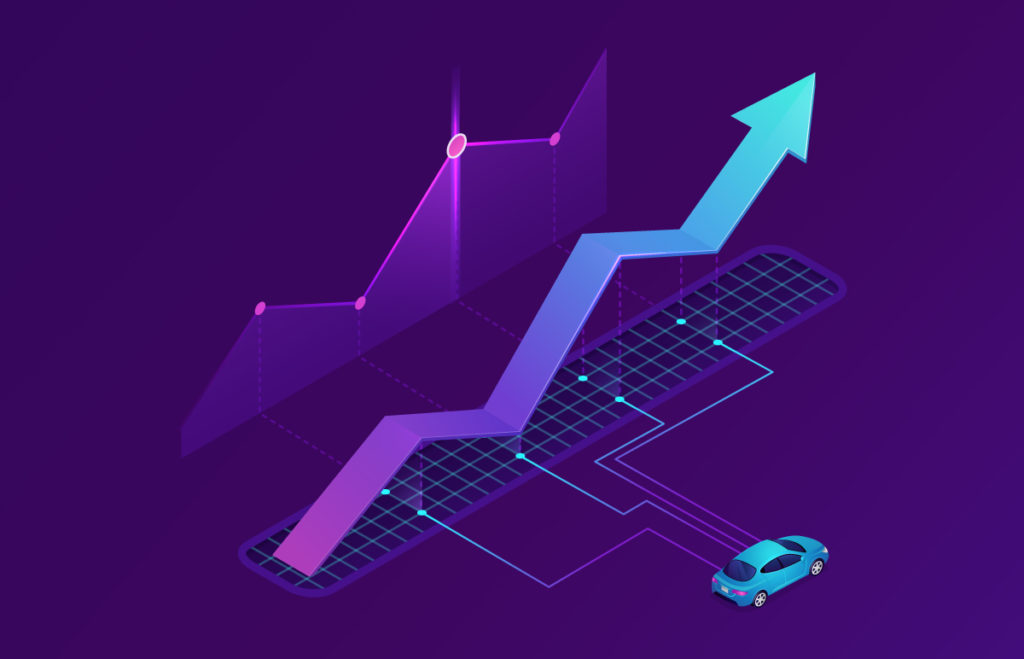State of the Auto Industry: All Signs Point to Healthy 2022 and Beyond
- by CUDL Team
- January 13, 2022

The automotive industry has dealt with multiple shocks over the past two years, but all signs are it is healthy and should remain strong in the coming two years.
That was the message from executives representing J.D. Power, who spoke on the recent State of the Industry webcast hosted by Origence. On Sept. 1, CUDL announced an alliance with J.D. Power and the CUDL AutoSmart online shopping program to expand inventory visibility for CUDL dealerships. As a result, dealers will be able to have their inventory displayed on J.D. Power’s website, which averages 1.5 million monthly visits and a lead-to-sale closing ratio of 8 percent.
According to Luke Donahue, senior consulting manager for J.D. Power, and David Paris, senior manager of market intelligence at J.D. Power Valuation Services, auto sales were well on their way to recovering from the pandemic before supply chain issues dragged down the retail sales pace to near 15-year lows.
The Power Information Network, or PIN, provides real-time transaction data from a network of more than 16,000 dealerships across the United States and Canada, who report more than 1 million transactions per month. Donahue said J.D. Power uses this information to provide daily data, analytics, and consulting services to its clients.
In 2020, sales were down 1.5 million from J.D. Power’s forecast at the beginning of the year: 15.5 million actual versus 17 million expected. Donahue said pent-up demand led to three of the top months J.D. Power has ever recorded in March, April and May of 2021.
“It was a strong start to the year without massive incentive programs, then it fell apart very quickly,” he assessed.
A lack of dealer stock has been hindering sales. J.D. Power’s inventory tracking tool showed only one million available vehicles on lots at the end of October, barely above the lows of July, August and September.
Half of vehicles that hit lots today are sold within seven days. Donahue said credit unions and dealerships need to have great relationships in place so they can promptly offer competitive rates.
“More than half of consumers financed their vehicle through the dealership in October,” he noted. “But only half of those chose to go with the captive. There is a huge opportunity for non-captive lenders.”
The customer-facing transaction price of vehicles has skyrocketed since March, Donahue continued. He noted that pricing is up 29% year over year and retailer profitability is at all-time levels. Further, manufacturers are paying less on incentives, but higher values offered on trade-ins is helping to mitigate some of the cost increases.
J.D. Power’s production forecast notes in a normal year, the industry can produce 1.3 million to 1.5 million vehicles each month. Production is expected to ramp up in the second quarter of 2022, but it will not impact the inventory situation for “quite some time,” Donahue warned.
“We don’t expect to see any real improvement until maybe October 2022,” he said. “The main reason is the non-retail channels – fleet, government and small businesses – have been starved for some time. They will suck up any additional production until Q4 next year.”
Six metrics driving increase in used vehicle values
As the calendar flipped to 2020, the used vehicle market was coming off two consecutive positive years. Paris said this momentum was expected to continue into 2020, with J.D. Power’s forecast calling for prices of used autos to be flat to up slightly.
In the first two months of 2020, prices were trending right in line with forecasts, Paris noted. However, the used market was “quickly derailed” by the pandemic.
Wholesale vehicle prices bottomed out in April 2020, down 17 percent from mid-March. But just as quickly as prices declined, they recovered as restrictions were lifted. In January 2021, Paris said wholesale prices “began their trip to the moon,” increasing with each passing week. Wholesale prices now are 30 percent higher than they were one year ago, while used car prices are 18 percent higher YOY.
What are the drivers behind the massive used vehicle price increase? Paris noted there are six key metrics having the biggest influence: incentive spend, used supply, economic health, new production and inventory, demand, and housing prices – with all six interacting with each other.
“Overall demand is fueled by well-funded consumers who are ready to purchase vehicles – if they can find one,” Paris assessed. “Trade-in equity is through the roof because of the increase in used vehicle prices. Housing prices are robust, which gives homeowners the chance to refinance and take out equity. While there are concerns about the overall health of the economy, the recovery has been strong for many people.”
It will take new production for used prices to normalize, and inventory levels are expected to remain low through the rest of 2021, he warned.
Sales in 2022 are expected to be above 16.8 million units, which will delay the recovery of inventory. Paris stated that the auto industry traditionally has thought of three million units available as a “reasonable” supply, but it might have to get used to two million units.
The COVID economy hangover on automotive markets should dissipate by early 2023, noting that “there will be long-term impacts from lost new sales in 2020 and 2021, along with healthy demand supporting lower incentive levels.”
J.D. Power’s projected outlook for 2024 calls for used prices to decline from current peaks, but they will most likely remain high compared to historic levels. J.D. Power does not foresee the bottom falling out, despite some fears being expressed by lenders.
“We expect the used vehicle market to remain exceptionally strong, definitely this year, definitely next year, as it moves toward recovery. Used prices will not fall overnight – it will be a slow slide down.”
